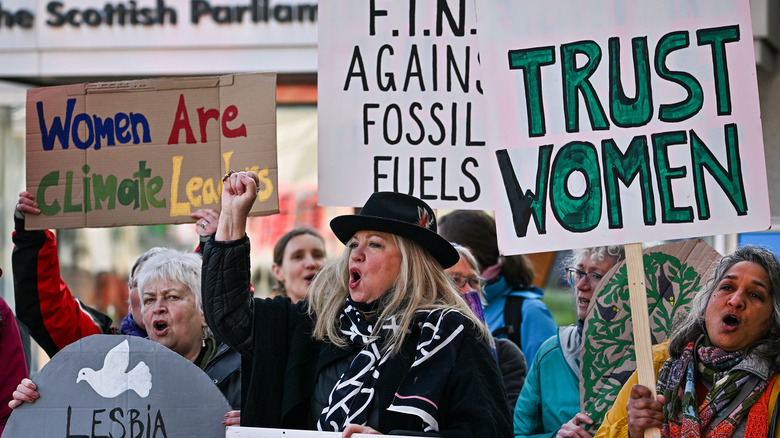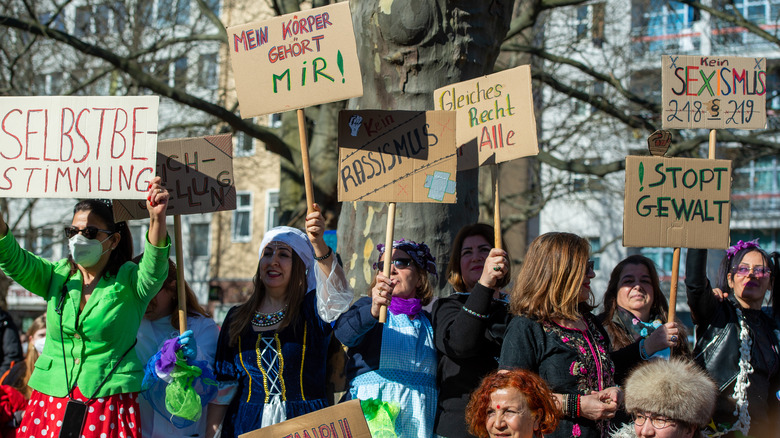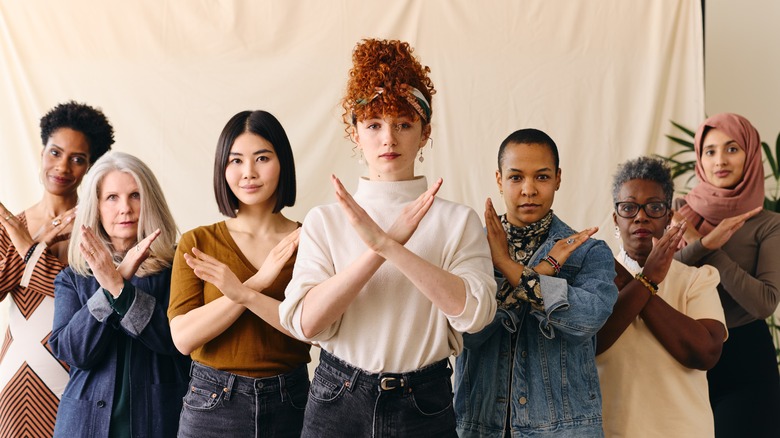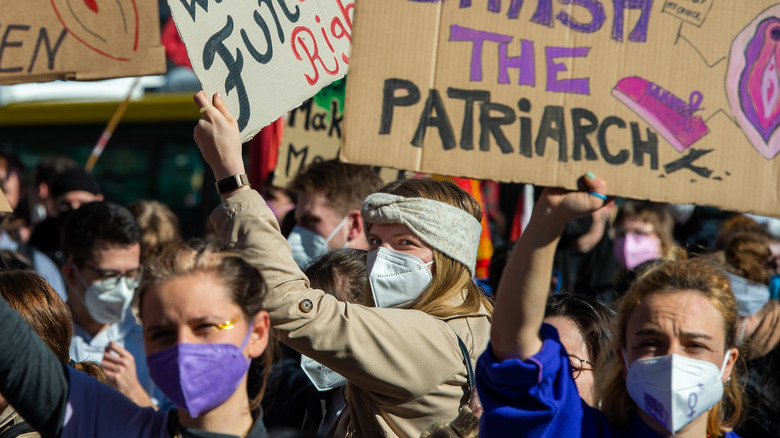The Fascinating History Behind International Women's Day
You might have known it was International Women's Day because of the amount of marketing emails in your inbox telling you it is. Everyone, corporations included, seem to be cashing in on a day people take to celebrate women (via History).
But International Women's Day is actually about way more than the accomplishments of women: It started as a way to affect social change in male-dominated societies. At the beginning of the 1900s, women had entered the workforce but were met with inhumane working conditions like long hours, cramped spaces, and little pay. Equality with their male peers was what was wanted then, and is still being fought for today.
In fact, International Women's Day events are, at least in part, responsible for the fall of the Russian Empire. In 1917, the International Women's Day website explains, Russian women went out on strike, wanting "bread and peace." More than 40,000 women and men went out on strike, taking to the streets, demanding "bread, better right, and the end to autocracy," per TIME. They also wanted the right to vote.
Within a week, the Russian Empire fell, Czar Nicholas II abdicated the throne, and a new socialist government was being formed within what would be known as the Soviet Union only a few years later (via TIME). But women didn't have to wait that long to vote: Suffrage legislation was enacted in 1917 — a year before Britain, three years before the United States — as a direct result of their International Women's Day strike.
How International Women's Day made its comeback
While International Women's Day got its start in the United States and spread through other countries quickly, it did not stay popular in the U.S. TIME cites the Cold War as a reason, saying the lack of interest was "largely due to [the holiday's] political associations with the Soviet Union and socialism amid increasing Cold War tensions." In 1975, International Women's Day was recognized by the United Nations, with member nations joining in after 1977, per International Women's Day's website. In 1996, the use of themes was adopted. Otherwise, little interest or movement was happening, especially inside the United States.
Things began changing again in 2011, 100 years after the first International Women's Day. While for the most part this day can feel like just another commercially-driven holiday, History explains that groups are "seeking to reclaim" the day and "return it to its activist past, by continuing to demand recognition and rights for women and their labor." In March 2011, then-President Barack Obama proclaimed March as "Women's History Month" and asked Americans "to mark IWD by reflection on the extraordinary accomplishments of women in shaping the country's history," the International Women's Day website explains.
With events like the Women's March — a response to former President Donald Trump's election — and the #MeToo movement, it's clear there is still a struggle for women's rights and equality. In some cases, countries have even gone backward from when the first International Women's Day. Russian President Vladimir Putin signed an amendment in 2018 that "decriminalized some forms of domestic violence," for example, according to TIME.
This is the real founder of International Women's Day
The roots of International Women's Day are often swept over, or simply tied to employee strikes and the Triangle Shirtwaist Factory fire. However, what brought down the Russian Empire was actually created by an Ukraine-born Jewish woman living in New York City.
Theresa Serber Malkiel emigrated to the United States in 1891, fleeing religious persecution in western Ukraine, per The Washington Post. Once in America, Malkiel "found herself in the same desperate position as so many other immigrant women, taking a job in a garment factory," where The Washington Post reports shifts could last 18 hours, and women were paid half of what men were.
Malkiel quickly joined the labor movement, starting a union for female cloak makers. After marrying, Malkiel was able to quit her factory job and focus on her writing and her activism, per The Washington Post. "In her pamphlets, columns, and speeches," The Washington Post explains, "she argued that true equality — for women, African Americans, immigrants and child laborers — would only come through socialism."
But Malkiel's writing wasn't enough to get women's voices heard. She instead brought women, and their voices, into the street.
This is where the first International Women's Day was held
According to the International Women's Day website, around 15,000 women took to the streets of New York City, "demanding shorter hours, better pay and voting rights" in 1908. Furthermore, Eileen Boris, a professor of feminist studies at the University of California Santa Barbara, explained to TIME, "[L]ike today, these women were in less organized workplaces [than their male counterparts], were in the lower echelons of the garment industry, and were working at low wages and experiencing sexual harassment."
The next march Theresa Serber Malkiel took part in was in 1910. This was an "uprising of 20,000," according to The Washington Post, where Malkiel "supported a huge strike of shirtwaist workers...with financial aid, speeches and columns" in the newspaper she ran with her husband. By now, National Women's Day events had sprung up across the United States, copying what Malkiel had organized in New York City the year before, per the International Women's Day website.
1910 was also the year the International Conference of Working Women was held in Copenhagen. Here, "100 women from 17 countries" met and agreed that every country should set aside a date to celebrate women, and continue to press for gender equality and women's rights. In 1911, the world saw its first International Women's Day celebrated on March 19 in Austria, Germany, Denmark, and Switzerland. Today, we celebrate International Women's Day on March 8 all around the world.



